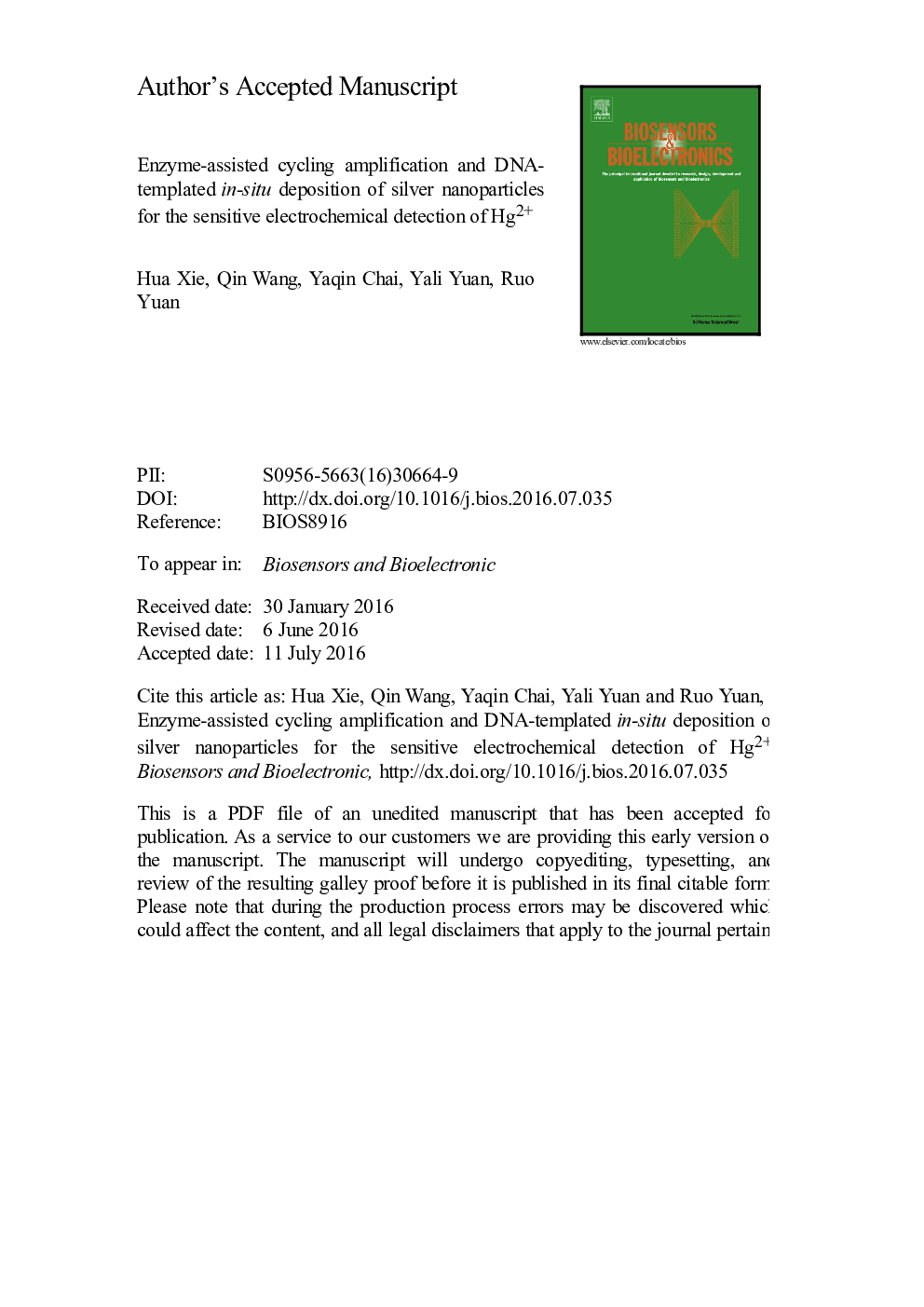| کد مقاله | کد نشریه | سال انتشار | مقاله انگلیسی | نسخه تمام متن |
|---|---|---|---|---|
| 7230308 | 1470945 | 2016 | 27 صفحه PDF | دانلود رایگان |
عنوان انگلیسی مقاله ISI
Enzyme-assisted cycling amplification and DNA-templated in-situ deposition of silver nanoparticles for the sensitive electrochemical detection of Hg2+
دانلود مقاله + سفارش ترجمه
دانلود مقاله ISI انگلیسی
رایگان برای ایرانیان
کلمات کلیدی
موضوعات مرتبط
مهندسی و علوم پایه
شیمی
شیمی آنالیزی یا شیمی تجزیه
پیش نمایش صفحه اول مقاله

چکیده انگلیسی
In this work, a label-free electrochemical biosensor was developed for sensitive and selective detection of mercury (II) ions (Hg2+) based on in-situ deposition of silver nanoparticles (AgNPs) on terminal deoxynucleotidyl transferase (TdT) extended ssDNA for signal output and nicking endonuclease for cycling amplification. In the presence of target Hg2+, the T-rich DNA (HP1) could partly fold into duplex-like structure (termed as output DNA) via T-Hg2+-T base pairs and thus exposed its sticky end. The sticky end of output DNA could then hybridize with 3â²-PO4 terminated capture DNA (HP2) on electrode surface to form output DNA-HP2 hybridization complex with the sequence 5â²-CCTCAGC-3â²/3â²-GGAGTCG-5â² (the sequence could be recognized by nicking endonuclease Nt. BbvCI). With the introduction of Nt. BbvCI, output DNA existed in hybridization complex was released from electrode and participated in the next hybridization process, accompanying with the cleave of HP2 to expose substantial 3â²-OH group, which could be extended into a long ssDNA nanotail with the aid of TdT and deoxyadenosine triphosphate (dATP). Since the long negatively charged ssDNA nanotail absorbed the positively charged silver ions on the DNA skeleton, the metallic silver could be in-situ deposited on electrode surface for electrochemical signal output upon addition of reduction regent sodium borohydride. Under optimal conditions, the developed electrochemical biosensor presented a good response to Hg2+ with a detection limit of 3 pM (S/N=3). Furthermore, the biosensor exhibited good reproducibility and high selectivity towards other interfering ions. The proposed sensing system also showed a promising potential application in real sample analysis.
ناشر
Database: Elsevier - ScienceDirect (ساینس دایرکت)
Journal: Biosensors and Bioelectronics - Volume 86, 15 December 2016, Pages 630-635
Journal: Biosensors and Bioelectronics - Volume 86, 15 December 2016, Pages 630-635
نویسندگان
Hua Xie, Qin Wang, Yaqin Chai, Yali Yuan, Ruo Yuan,